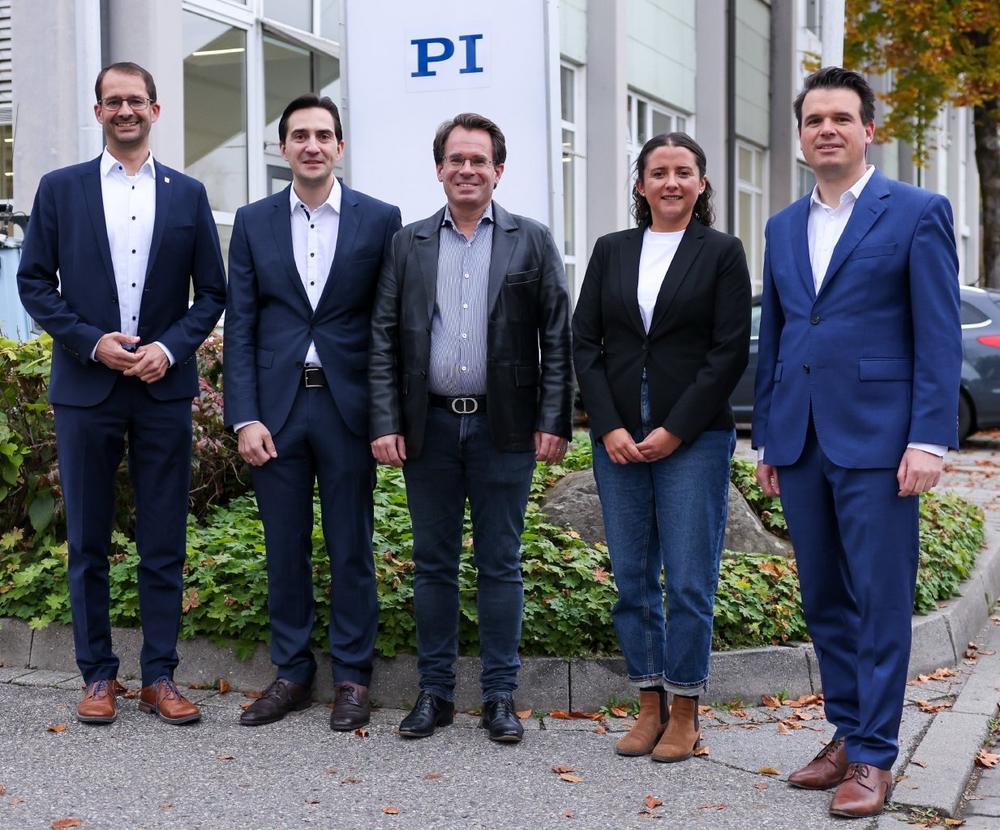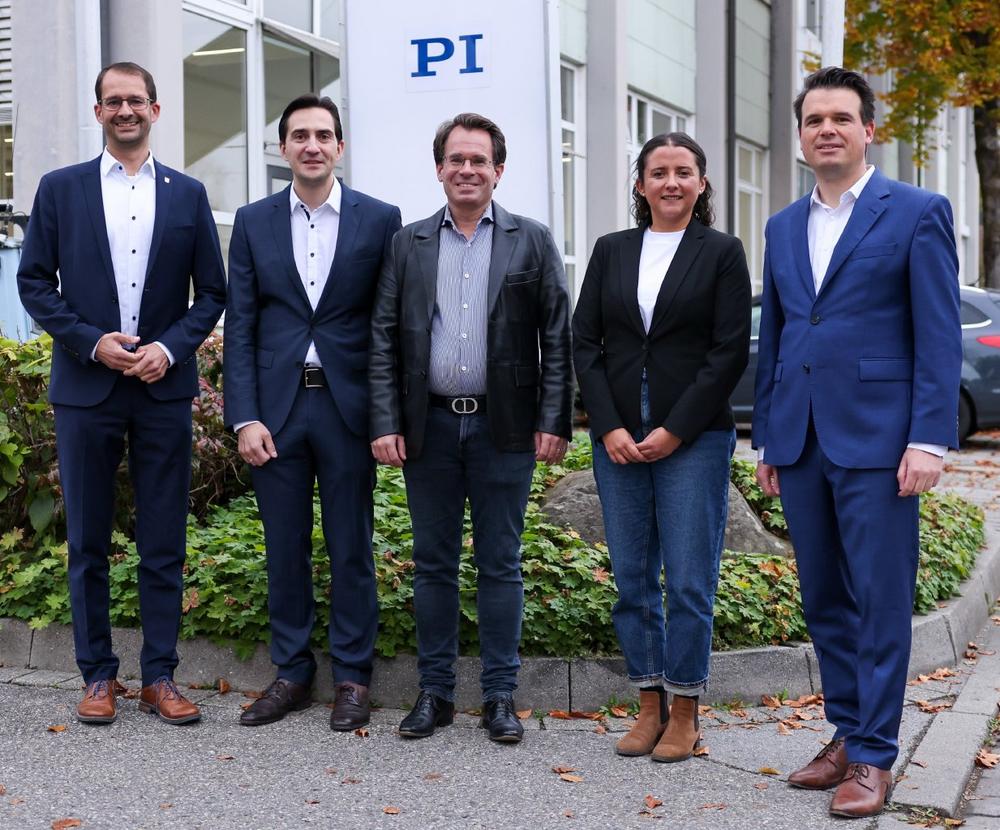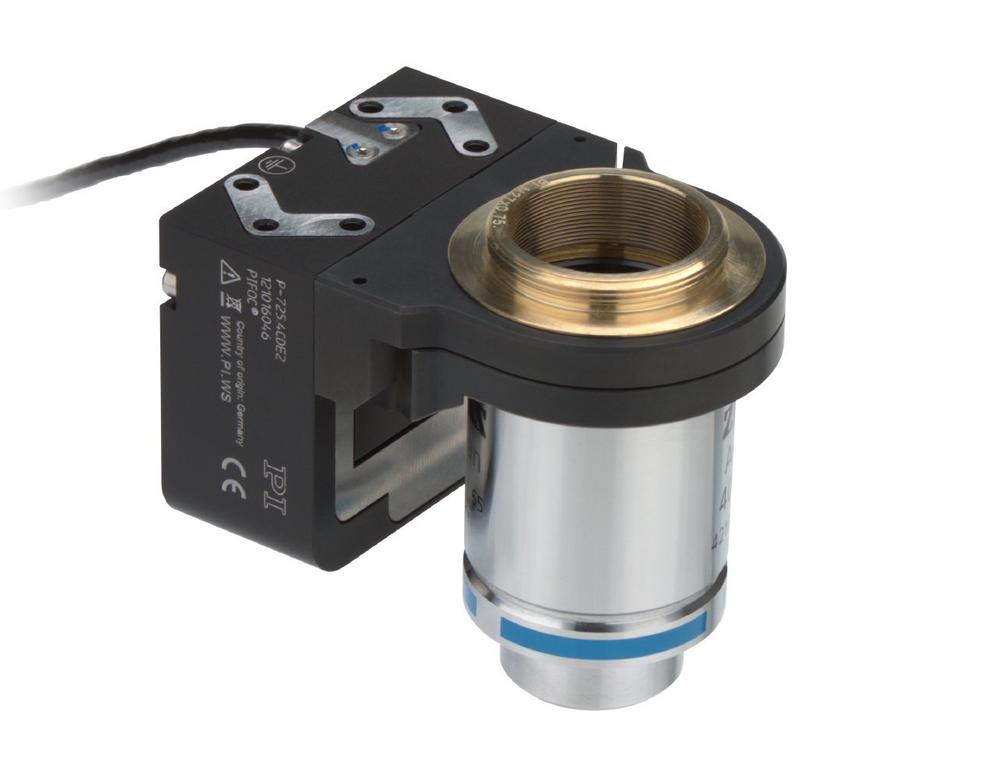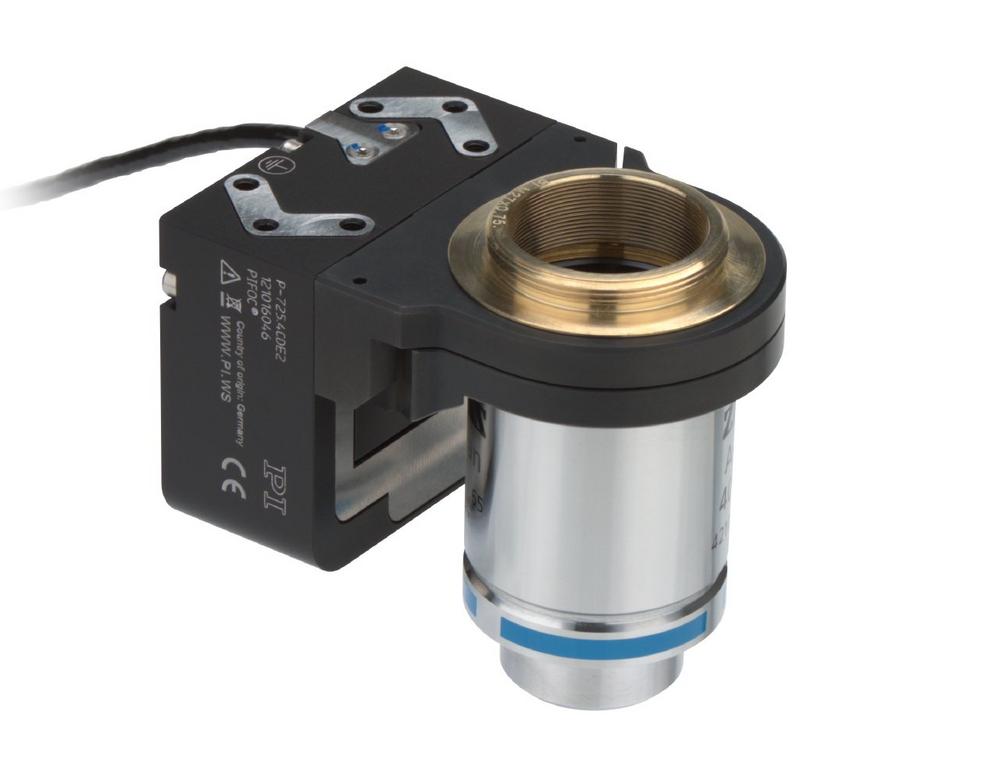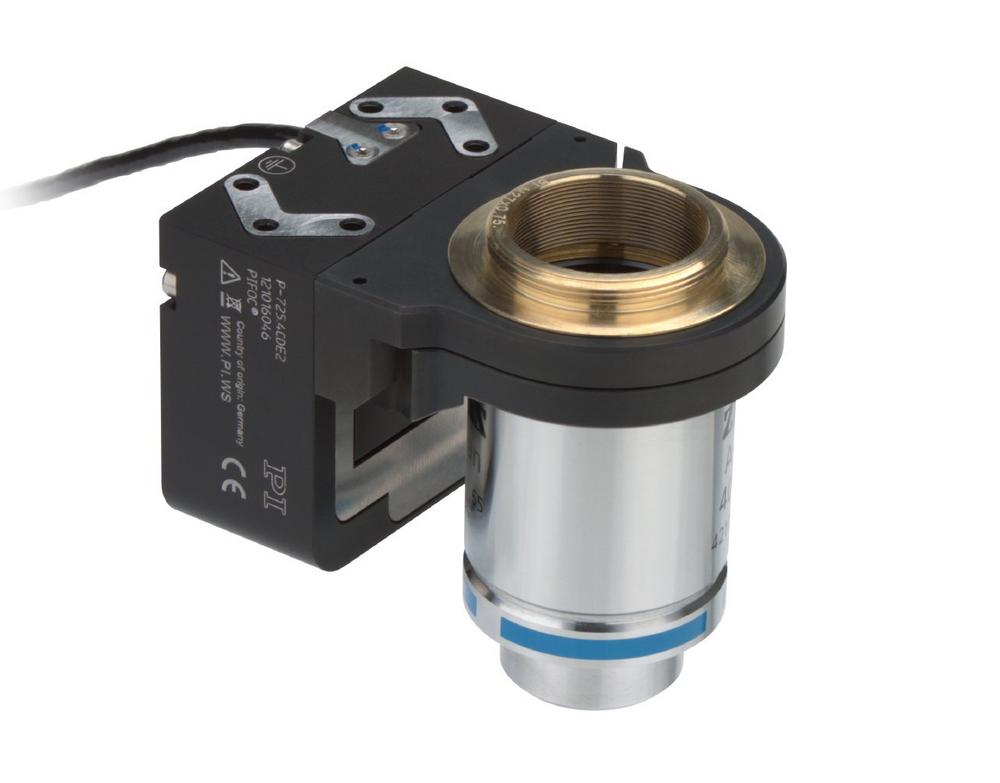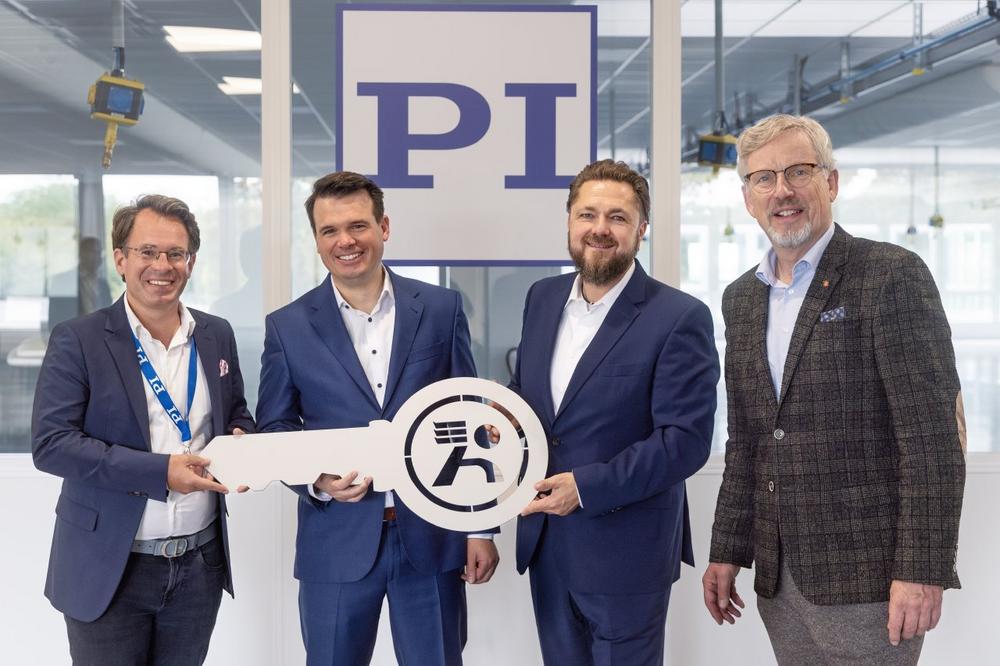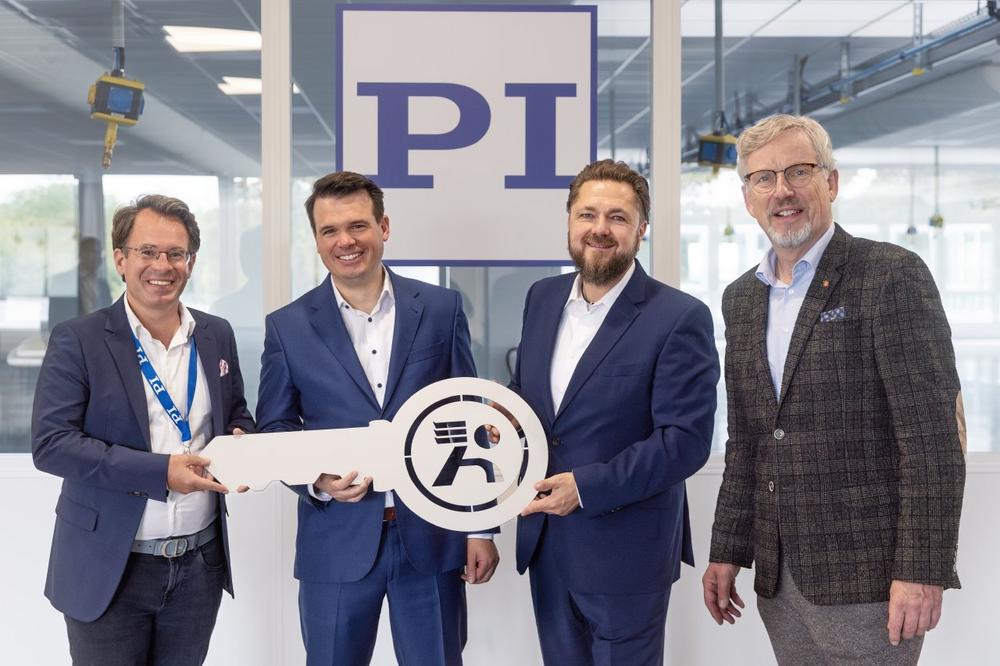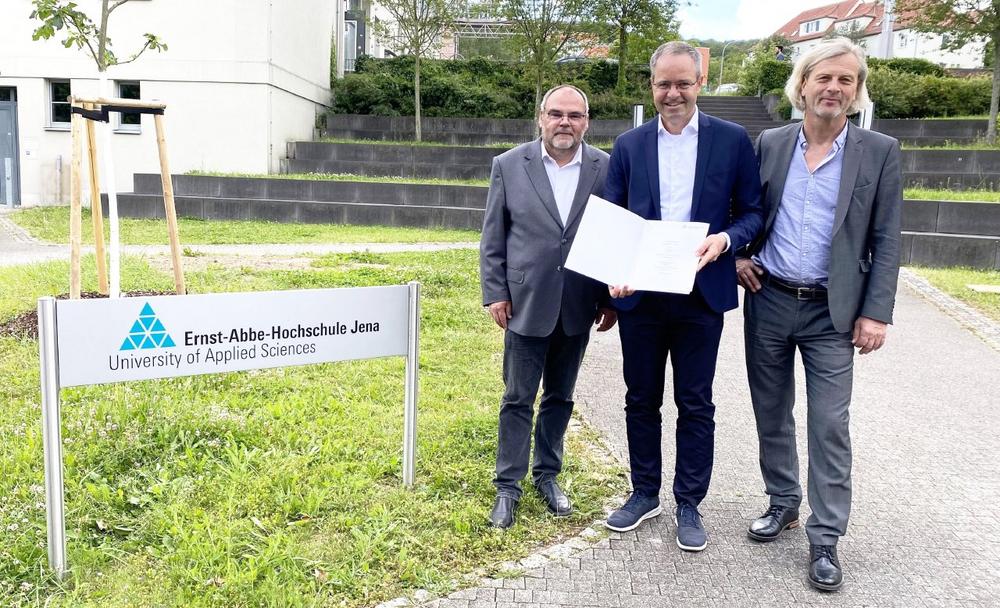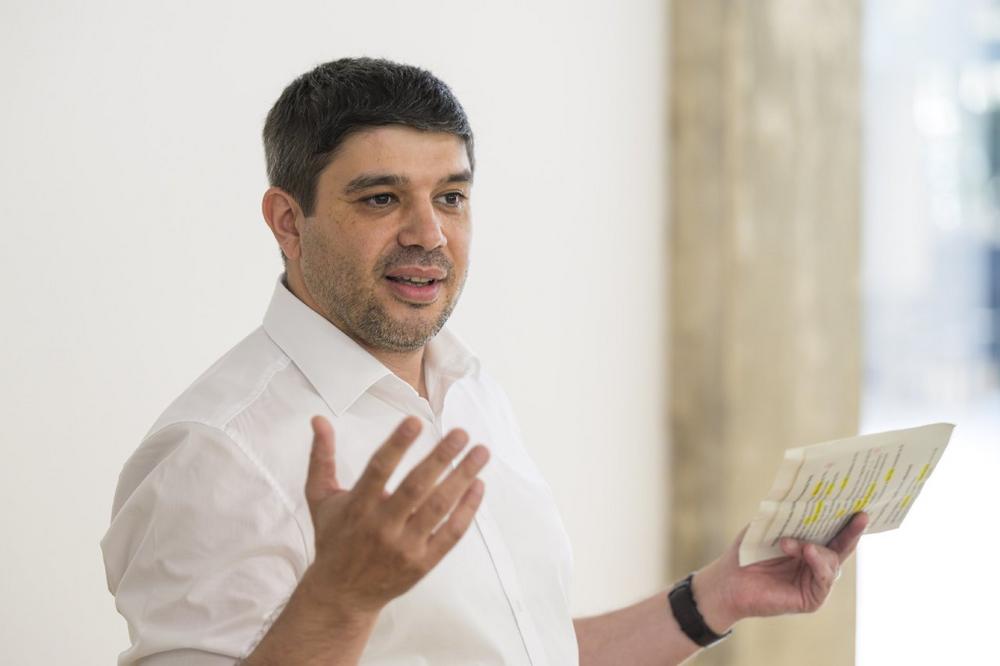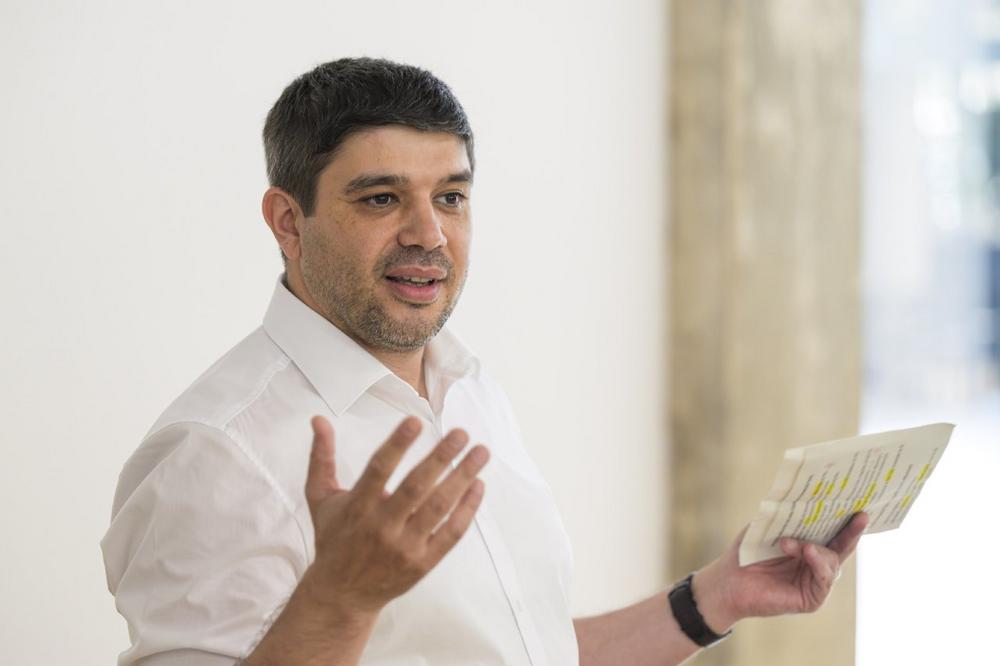-
Physik Instrumente (PI) Expands Electronics Manufacturing in Rosenheim
Physik Instrumente (PI), the market and technology leader for high-precision positioning technology and piezo applications, has significantly expanded its electronics manufacturing site based in Rosenheim, Germany. The floorspace available was extended by 600 m² to the present 2,100 m². In addition to optimized logistics, additional workspaces, and new production equipment, a special emphasis was placed on improving ergonomics. The successful expansion was celebrated in the presence of Rosenheim’s Lord Mayor Andreas März. All in all, PI invested 2.2 million euros in the expansion of the electronics manufacturing site in Rosenheim. Of this figure, the amount of around one million euros was allocated directly to production and to expanding the floorspace from 600 m²…
-
Physik Instrumente (PI) baut Elektronikfertigung in Rosenheim aus.
Physik Instrumente (PI), der Markt- und Technologieführer für hochpräzise Positioniertechnologie und Piezoanwendungen, hat seinen Standort für Elektronikfertigung in Rosenheim deutlich ausgebaut. Die verfügbare Fläche wurde um 600 m² auf nunmehr 2.100 m² erweitert. Neben einer optimierten Logistik, zusätzlichen Arbeitsplätzen und neuen Fertigungsvorrichtungen lag ein besonderes Augenmerk auf der Verbesserung der Ergonomie. Der erfolgreiche Ausbau wurde jetzt im Beisein von Rosenheims Oberbürgermeister Andreas März gefeiert. Insgesamt hat PI 2,2 Millionen Euro in den Ausbau des Standorts für die Elektronikfertigung in Rosenheim investiert. Davon flossen rund eine Million Euro direkt in die Produktion und den Ausbau der zusätzlichen Fläche von 600 m² auf jetzt 2.100 m². Mehr als eine Million Euro investierte das Unternehmen in die…
-
New Motion Control Solutions for Super Resolution Fluorescence Microscopy
With the P-725.xCDE1S focus scanner and the U-781 PILine XY stage system, PI completes its range of positioning systems for fluorescence microscopy applications. The dynamic focus scanner is offered as a complete package including controller and allows travel ranges up to 400 µm. The U-781 XY stage system with controller and joystick is mechanically compatible with inverted microscopes of leading manufacturers and offers interfaces to common microscopy software tools such as µ-Manager, MatLab, LabView, Python, and Nikon NIS Elements—all at an attractive price/performance ratio. Piezo Driven Focus Scanner The starting point for the development of the P-725.xCDE1S PIFOC® scanner system for the fine positioning of microscope objectives was the increasing demand…
-
New Positioning Solutions for Fluorescence Microscopy
With the P-725.xCDE1S focus scanner and the U-781 PILine XY stage system, PI completes its range of positioning systems for fluorescence microscopy applications. The dynamic focus scanner is offered as a complete package including controller and allows travel ranges up to 400 µm. The U-781 XY stage system with controller and joystick is mechanically compatible with inverted microscopes of leading manufacturers and offers interfaces to common microscopy software tools such as µ-Manager, MatLab, LabView, Python, and Nikon NIS Elements—all at an attractive price/performance ratio. The starting point for the development of the P-725.xCDE1S PIFOC® scanner system for the fine positioning of microscope objectives was the increasing demand for a dynamic focus scanner…
-
Neue Bewegungslösungen für die Fluoreszenzmikroskopie
Mit dem Fokusscanner P-725.xCDE1S und dem PILine Kreuztischsystem U-781 rundet PI ihr Angebot an Positioniersystemen für Anwendungen in der Fluoreszenzmikroskopie ab. Der dynamische Fokusscanner wird als Komplettpaket inklusive Controller angeboten und ermöglicht Stellwege bis 400 µm. Das U-781 Kreuztischsystem mit Controller und Joystick ist mechanisch kompatibel mit inversen Mikroskopen führender Hersteller und bietet Schnittstellen zu den gängigen Softwaretools für die Mikroskopie wie µ-Manager, MatLab, LabView, Python, Nikon NIS Elements – und das zu einem sehr attraktiven Preis-Leistungs-Verhältnis. Auslöser für die Entwicklung des PIFOC® Scannersystems P‑725.xCDE1S für die Feinpositionierung von Mikroskopobjektiven war die steigende Nachfrage nach einem dynamischen Fokusscanner mit besonders gutem Preis-Leistungs-Verhältnis. Das Scannersystem wird als Komplettpaket mit Controller in zwei…
-
Physik Instrumente (PI): New Building to Support Sustainable Strategy with Goal of Tripling Capacity
On September 16, 2024, Physik Instrumente (PI), the market and technology leader for high-precision positioning technology and piezo applications, inaugurated the new building of its Eschbach site in the Breisgau Business Park in southwestern Germany. Investments of approximately 20 million euros support the expansion of the global development and production center and strengthen the economic development of the region with state-of-the-art jobs. The PI Group has significantly expanded its location in the Breisgau Business Park in Eschbach, Germany, with an additional 6,500 m² of space. As a manufacturer of mechanical systems, drive technology, and control solutions for high-precision motion and positioning tasks, PI serves customers in global growth sectors such…
-
Physik Instrumente (PI) Eschbach: Neubau unterstützt nachhaltige Strategie – Verdreifachung der Kapazität zum Ziel
Physik Instrumente (PI), der Markt- und Technologieführer für hochpräzise Positioniertechnik und Piezoanwendungen, weihte am 16. September 2024 den Neubau seines Standorts Eschbach im Gewerbepark Breisgau ein. Investitionen von rund 20 Millionen Euro unterstützen den Ausbau des global agierenden Entwicklungs- und Produktionszentrums und stärken durch hochmoderne Arbeitsplätze die wirtschaftliche Entwicklung der Region. Mit rund 6.500 m² zusätzlicher Fläche hat die PI Group im Gewerbepark Breisgau in Eschbach ihren Standort substanziell ausgebaut. Als Hersteller für mechanische Systeme, Antriebstechnik und Steuerungslösungen für hochpräzise Bewegungs- und Positionieraufgaben bedient PI Kunden aus globalen Wachstumsbranchen wie der Halbleiterindustrie, der Photonik und der Lasermaterialbearbeitung. „PI befindet sich seit Jahren auf einem ungebrochenen Wachstumspfad. Mit dem Neubau tragen…
-
PI Ceramic: Kooperation zu neuem Studienmodell „Studium mit vertiefender Praxis“ mit der Ernst-Abbe-Hochschule Jena vereinbart
Dieses Modell kombiniert die Vorteile eines Dualen Studiums mit denen eines regulären Fachhochschulstudiums. Die Studierenden übernehmen während ihres Studiums eine Position als Werksstudentin oder Werksstudent bei PI Ceramic und führen ihre Abschlussarbeiten im Unternehmen aus. Im Gegenzug bietet PI Ceramic professionelle wissenschaftliche Betreuung vor Ort sowie eine finanzielle Unterstützung während des Regelstudienzeitraums. PI Ceramic kooperiert seit vielen Jahren eng mit Prof. Dr. Jörg Töpfer vom Fachgebiet Werkstofftechnik des Fachbereichs SciTec an der EAH Jena. Viele gemeinsame Entwicklungsprojekte wurden erfolgreich durchgeführt und zahlreiche Absolventinnen und Absolventen des Lehrstuhls sowie anderer Bereiche der EAH Jena haben ihre Karriere bei PI Ceramic gestartet. Dr. Patrick Pertsch, Geschäftsführer von PI Ceramic, zeigte sich erfreut…
-
Physik Instrumente (PI) Opens Technology Hub in Southwest Germany
On July 17, 2024, Physik Instrumente (PI) inaugurated the PI Technology Hub in Karlsruhe, Germany. On an area of 500 sqm, the hub offers space for ten employees of the central department “Global Research” as well as ten additional places for more extensive project work and for PhD students and working students. It is equipped with special laboratories to allow for hands-on experiments. The strategic proximity to the Karlsruhe Institute of Technology (KIT) and other research institutions will promote an intensive exchange and close cooperation. “The Technology Hub will bring together the latest findings from basic research with decades of practical experience in the global high-tech industry,” says Salah Benamira, SVP…
-
Physik Instrumente (PI) startet Technology Hub in Karlsruhe
Physik Instrumente (PI) hat am 17. Juli 2024 den PI Technology Hub Karlsruhe im iWerkx® auf dem Höpfner Areal eingeweiht. Auf einer Fläche von 500 m² bietet der Hub Platz für zehn Mitarbeitende aus dem Zentralbereich „Global Research“ sowie zusätzliche zehn Plätze für umfangreichere Projektarbeiten, Doktoranden und Werkstudierende. Speziallabore sind integriert, um praktische Versuche durchführen zu können. Durch die strategische Nähe zum Karlsruher Institut für Technologie (KIT) und zu weiteren Forschungseinrichtungen werden ein intensiver Austausch und eine enge Zusammenarbeit gefördert. „Im Technology Hub sollen neueste Erkenntnisse der Grundlagenforschung mit der jahrzehntelangen Erfahrung für praktische Anwendungen in der weltweiten Hightech-Industrie zusammengeführt werden“, erläutert Salah Benamira, Senior Vice President Global Research bei PI.…

